Facts about Chennakesava Temple in Belur - Karnataka
The Chennakesava Temple: A Spectacular Example of Hoysala Temple Architecture

Belur is a tiny town in the Hassan district of Karnataka, located on the Yagachi River's banks and surrounded by lush vegetation. It is an old and significant town also referred to as Velapura. the seat of government for the Hoysalas, Karnataka's kings from the 10th to the 14th century. They were notable patrons of the arts, literature, and religion and are renowned for their exquisite temple architecture, such as the Chennakesava Temple.
The Hoysalas of Belur
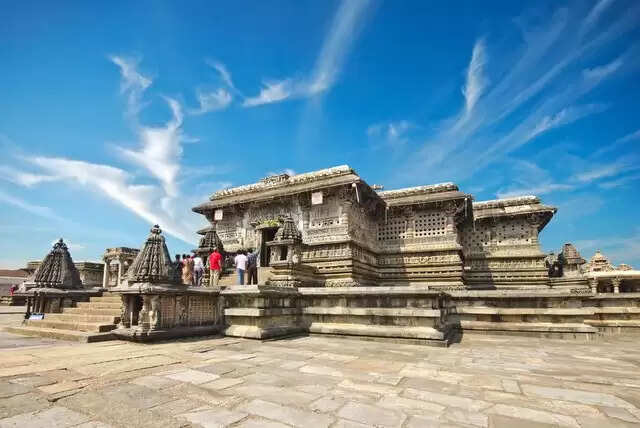
The Western Ghats' Malenadu region, where the Hoysalas were predominantly from, is renowned for producing skilled warriors. They seized the regions that are now part of Karnataka by taking advantage of internal conflicts between the Chalukya and Kalachuri dynasties. They were in control of the majority of Karnataka by the 13th century, as well as of western Andhra Pradesh and Telangana and smaller portions of Tamil Nadu.
Hoysala Architecture
Due to their effect on South Indian civilization, art, architecture, literature, and religion, the Hoysala period is regarded as the region's "golden age." Their initial capital was Belur, but they later relocated to Halebidu, also known as Dwarasamudra. They are most known now for their magnificent Hoysala architecture.
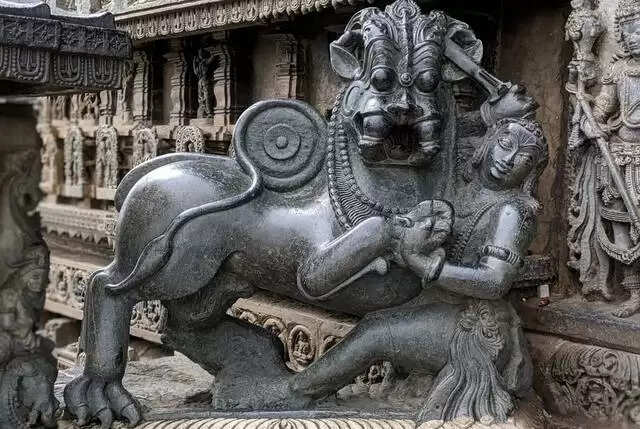
There are currently 92 temples, of which 35 are located in the Hassan district. Chennakesava Temple in Belur, Hoysaleshwar Temple in Halebidu, and Chennakesava Temple in Somnathpura are prominent examples of them. Other temples with distinctive Hoysala architecture include Laxmi Narasimha in Nuggehalli, Veer Narayan in Belawadi, Ishwar Temple in Arasikere, Bucheswara in Koravangla, Jain Basadi in Halebidu, and Brahmeshwara in Kikkeri.
Etymology of Hoysala
A young man named Sala is said to have defended his Guru with a sword against a tiger in Kannada legend. Hoysala got its name because "strike" was referred to as "Hoy" in traditional Kannada.
Chennakesava Temple Complex, Belur
A young man named Sala is said to have defended his Guru with a sword against a tiger in Kannada legend. Hoysala got its name because "strike" was referred to as "Hoy" in traditional Kannada.
History of Chennakesava Temple
The construction of the Belur temple was initiated by Vishnuvardhan in 1117 AD and completed after three generations of the royal family worked on it for 103 years. It is believed that more than a thousand artists contributed to this architectural marvel made of stone.
The temple is devoted to Lord Vishnu, also known as Chennakesava, which translates to beautiful Vishnu (Chenna - beautiful, Keshava - Vishnu).
The temple's purpose was to commemorate King Vishnuvardhan's significant military triumph over the Cholas. Some locals also believe that the temple was constructed to honor Lord Vishnu after King Vishnuvardhan's conversion from Jainism to Vaishnavism, under the guidance of his mentor, Shri Ramanujacharya. While he practiced Jainism, King Vishnuvardhan was called Bittidev. His wife, Shantala Devi, was a renowned supporter of music, dance, and the arts. She was an accomplished Bharatnatyam dancer and was often referred to as Natyasamragyi or the queen of dance.
Gopuram of Chennakesava Temple

The enormous temple is surrounded by a brick enclosure. The temple has a pair of entrances. The building facing east contains a massive five-story Gopuram. The attackers from the Delhi Sultanate demolished the main gateway, which was eventually repaired during the Vijayanagar Empire.
The Gopuram's top is constructed of brick and mortar, while the bottom is composed of hard stone. It has numerous god and goddess statues that are lavishly ornamented. The Go-puram is so named because it contains two structures on the topmost corners that resemble cow horns, and in the space between the two horns are five golden Kalashas, or pots.
Main Temple
The main temple is a singular star-shaped building named Jagati that is situated on an elevated platform. The Garbhagriha (inner sanctum), Sukanasi (vestibule), and Navranga mandapa make up the temple. There once stood a brick-and-mortar vimana or shikhara that was supported by woodwork that was covered in gold-gilded copper sheets. Early in the 19th century, it had to be destroyed in order to preserve the inner sanctum.
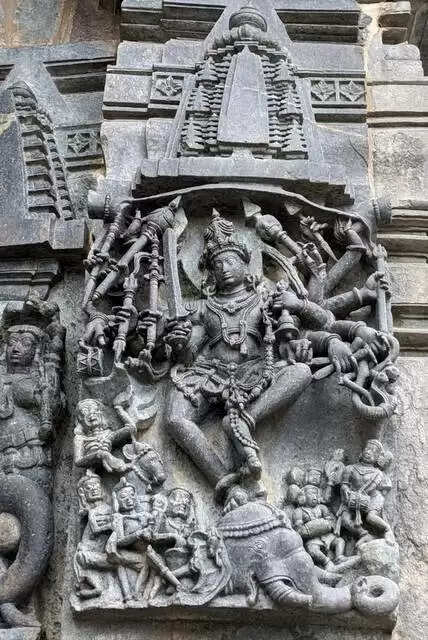
In the east, north, and south directions, there are three entrances to the temple that lead to the Navranga mandapa. The temple's structure is covered in elaborate motifs and is made of soapstone.
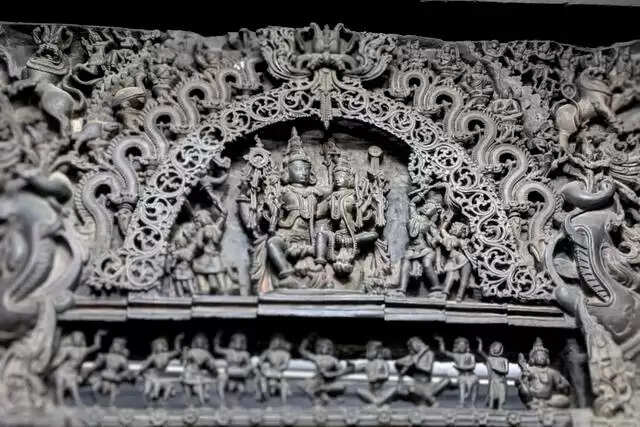
Makara Torana is used to embellish the entrance on the east. The 10 avatars or manifestations of Lord Vishnu are shown on the overhead panel on the main door. The state symbol of the Hoysalas, Sala killing the tiger, is shown in two enormous monuments on either side of the gate. On either side of the emblem are two tiny shrines devoted to Lord Vishnu. King Vishnuvardhan and his grandson Veer Ballala are shown in court scenes carved into the walls on either side of the east gate.

Additionally, the temple's doors include stunning filigree carvings. A golden Dhwajastambha is located in front of the east gate, heading towards the Gopuram. A gorgeously carved statue of Garuda, the vehicle or Vahana of Vishnu, facing the shrine, is situated in front of it.
Navrang Mandapa
48 pillars and ceilings that have been finely sculpted and well polished adorn the enormous Navrang Mandapa. The pillars come in a variety of shapes and styles. The four pillars in the middle are the most crucial of these.
The Mohini pillar on the southwest and the Narsimha pillar on the southeast are the two that stand out the most. The Mohini pillar is made up of sixteen fluted star-shaped pillars and features a sizable representation of Lord Vishnu as Mohini. The Narsimha pillar features intricate structure and small relief carvings. According to legend, the pillar was previously rotating on its own axis with the aid of a stone ball bearing, but after the vimana or shikhara was taken apart, the rotation ceased.
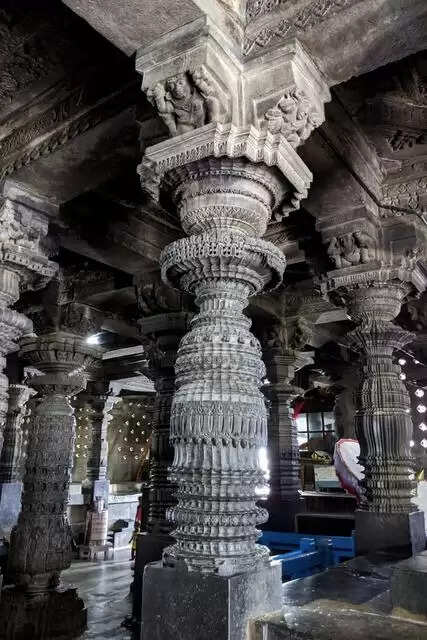
At each upper corner of the four centre pillars are four bracketed figures. The finest example of Hoysala craftsmanship may be found in these figurines. These graphs show:
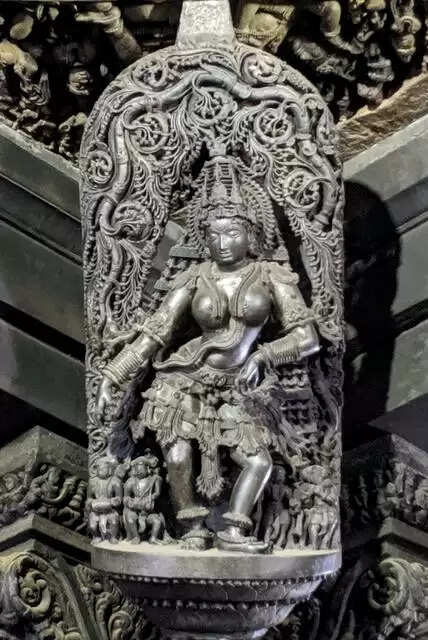
- Shuka Bhashini – a lady in conversation with her pet parrot
- Queen Shantaladev
- Gandharva dance
- Kesh Shringara – a lady wringing her hair after the bath
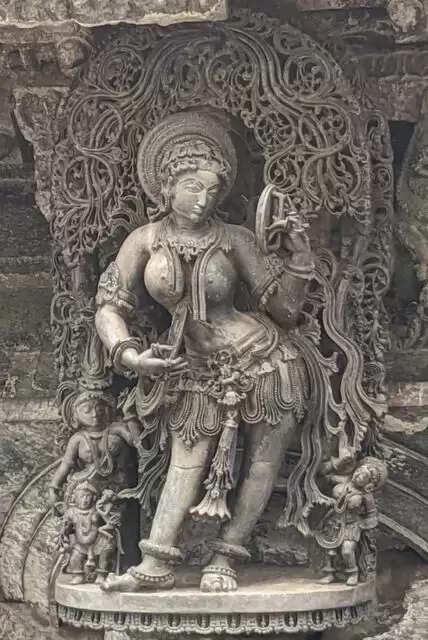
The fact that the accessories on the figures of the Gandharva dancer and Shantaladevi can be moved makes them notable. The bracelet on the dancer's arm and the little ring on the Queen's headpiece on the southwest and northwest pillars, respectively, are reported to be rotatable.
Ceiling
The mandapa's main ceiling is carved with outstanding elegance. An upside-down lotus is the shape of the ceiling, which is framed by two concentric rings. With Narasimha engraved into the base and a lotus blossom representing Brahma in the centre, the circle's centre is shaped like an upside-down Linga. The Trimurti Sangama Bhubaneshwari is a single stone that uses symbols to depict the Three Persons of the Trinity.
Since Lord Vishnu is regarded as the family deity of the Hoysalas, the majority of the temples in and around Belur are devoted to His Narasimha form. A perforated screen with square and diamond-shaped openings allows light and air to penetrate through the mandap's façade. This is a distinguishing feature of Hoysala or Chalukyan architecture.
GarbhaGriha

The inner sanctum, or Garbhagriha, is accessible from the mandapa on the west side. It houses a stunningly decorated, six-foot-tall statue of Lord Vishnu in the Chaturbhuj or four-armed mudra with a halo, perched on a three-foot pedestal. The discus and conch are held in the upper two hands, and the mace and lotus are held in the lower two hands. The halo features cyclical engravings of Lord Vishnu's 10 manifestations, or avatars.
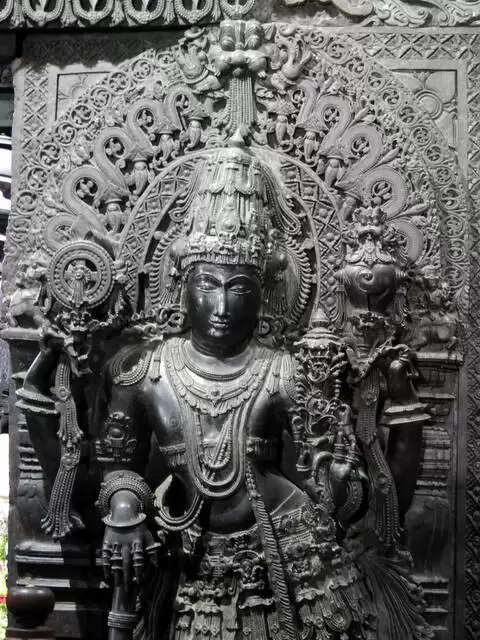
His consorts' idols, Sridevi and Bhudevi, stand on either side of it. Filigree and Makara Torana works adorn the entrance to the inner sanctum. On the top of the gateway is a statue of Lord Vishnu and Devi Lakshmi. The two Dwarapalas, Jay and Vijay, who are intricately carved and ornamented, are located on either side of the door.
The god was also known as Vijaynarayana, according to an old Kannada inscription found next to the Navaranga mandap's northern entrance.
The exterior walls of Chennakesava Temple
The main temple's exterior walls are adorned with lavish carvings featuring a variety of animals, humans, gods, and goddesses.
The Navrang mandapa's wall portrays the social fabric, or Jivatma, while the Garbhagriha's walls depict spiritual life and stories from the Puranas, or Paramatma.
The entire outer wall of the temple is exquisitely decorated and intricately carved. The lower portion of the wall showcases horizontal rows of elephants, lions, and small figurines that are ornately embellished and interspersed with larger vertical images. These images were carved from a single stone and secured to the wall with a stone interlocking system, which can also be seen on the roof's hanging eaves surrounding the temple wall.
Elephant Carvings
The temple boasts around 650 elephant carvings, each depicting a unique mood and with no duplicates. In addition, there are 38 bracketed figures placed at an angle between the outer wall and the overhanging eaves of both the Navaranga mandapa and the Garbhagriha. These bracketed figures are intricately designed and adorned with Madanikas, representing various dance poses and ritualistic activities.
- A lady admiring herself in the mirror
- A monkey pulling the saree of a lady
- Lady dressing her hair after the bath
- Lady aiming an arrow
- A lady in Tribhangi Mudra with the body bent at three places
- Lady playing Rudra veena
- Lady looking at a lizard who is eyeing a fly sitting on jackfruit
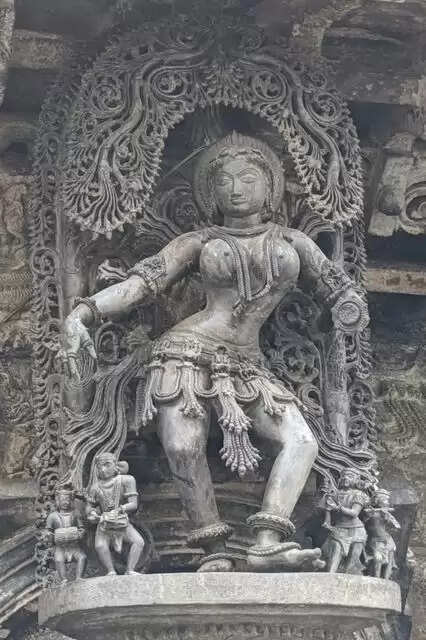
Numerous exquisite beauties are carved in stone, showcasing various mythological aspects on the walls of the Garbhagriha, such as:
- Narasimha killing Hiranyakashyipu
- Mahisasurmardini
- Ravana lifting Kailasha mountain
- The Sun God
- Shiva killing Andhakasur
- Tales from Ramayana and Mahabharata
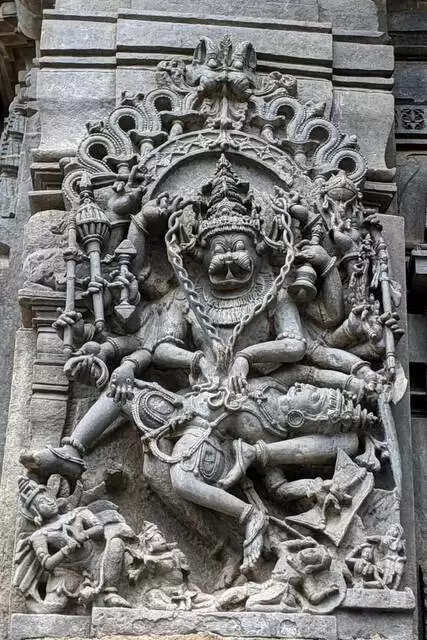
Towards the north side of the platform, there is a sizable footprint that is believed to belong to Lord Vishnu. In the event that one is unable to have a darshan of the deity inside, they can worship the footprints located outside.
Inscriptions
The east wall of the north gate of the temple features old Kannada inscriptions providing detailed information about the temple's structure, history, and donations. Additionally, there are small shrines of Lord Vishnu located on either side of the entrances at the north and south gates leading to the Navaranga mandapa.
In addition to the main temple, the complex encompasses several other exquisite temples and shrines, including the Kappe Chennigaraya Temple, Veernarayana Temple, Saumyanaki Temple, Andal Temple, Kalyana Mantapa (a wedding hall), Deepastambha, kitchen, water tank, and various other structures.

